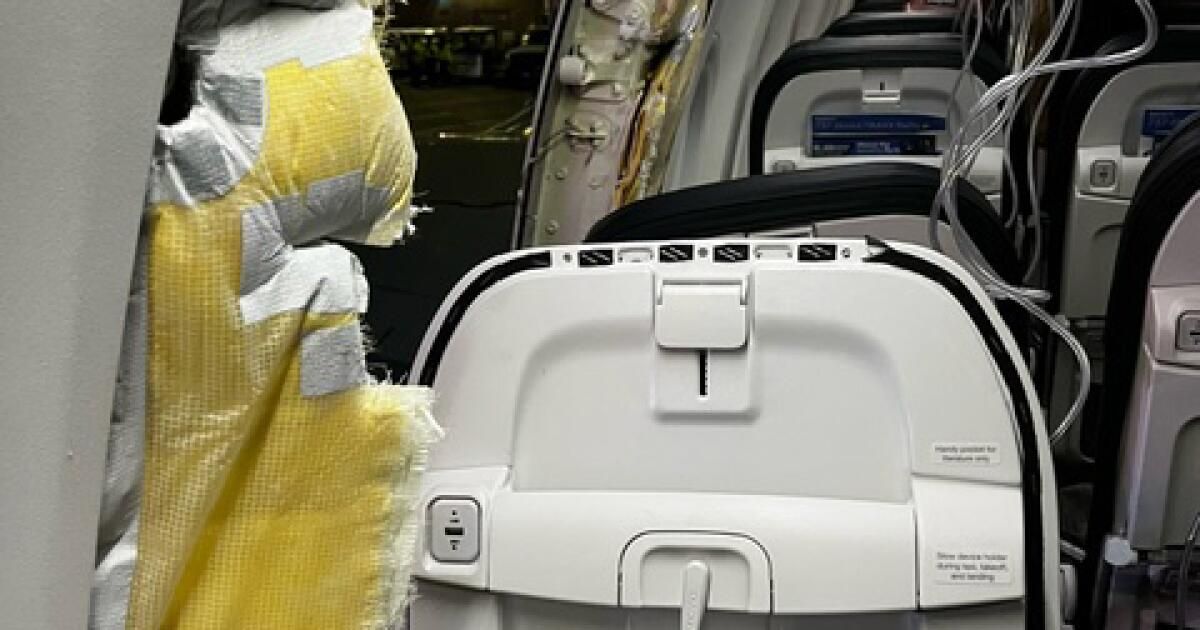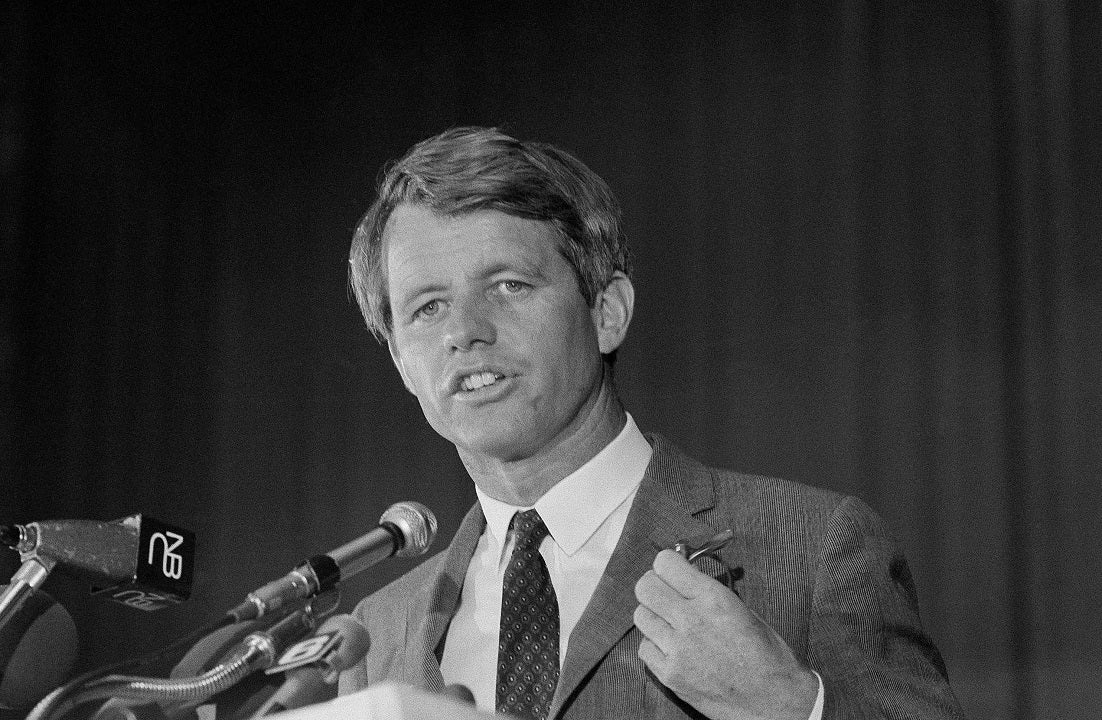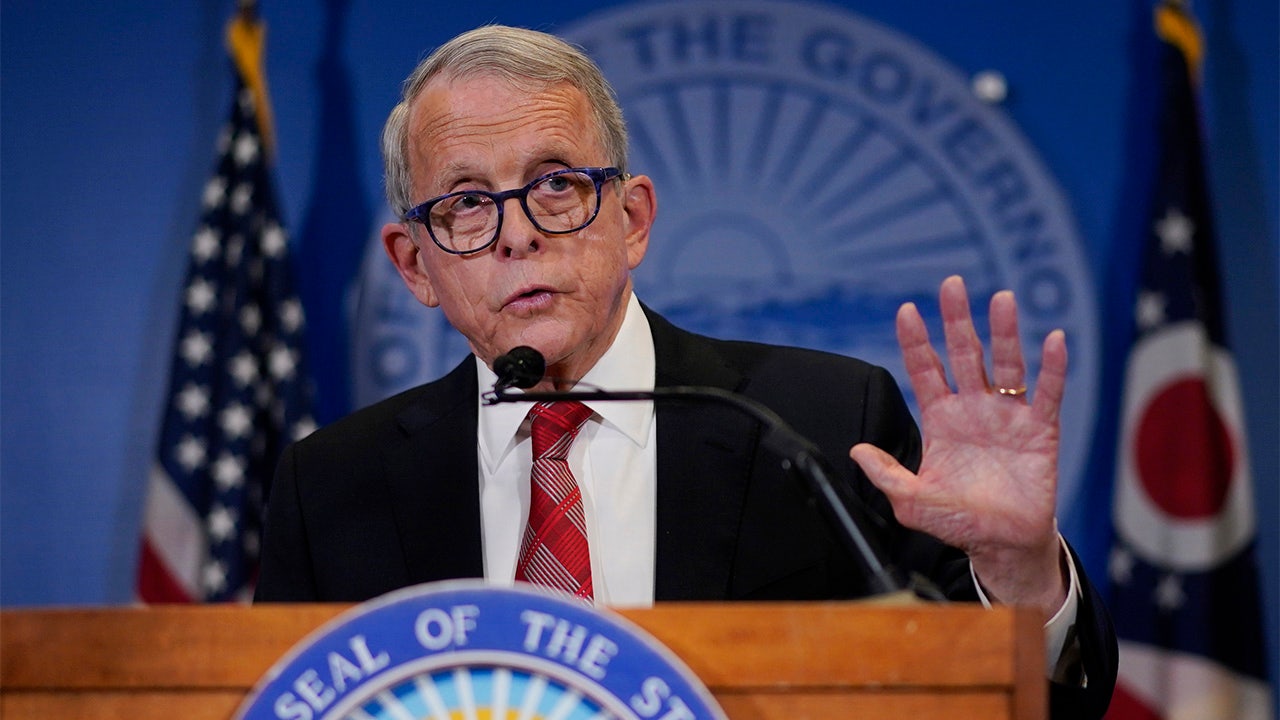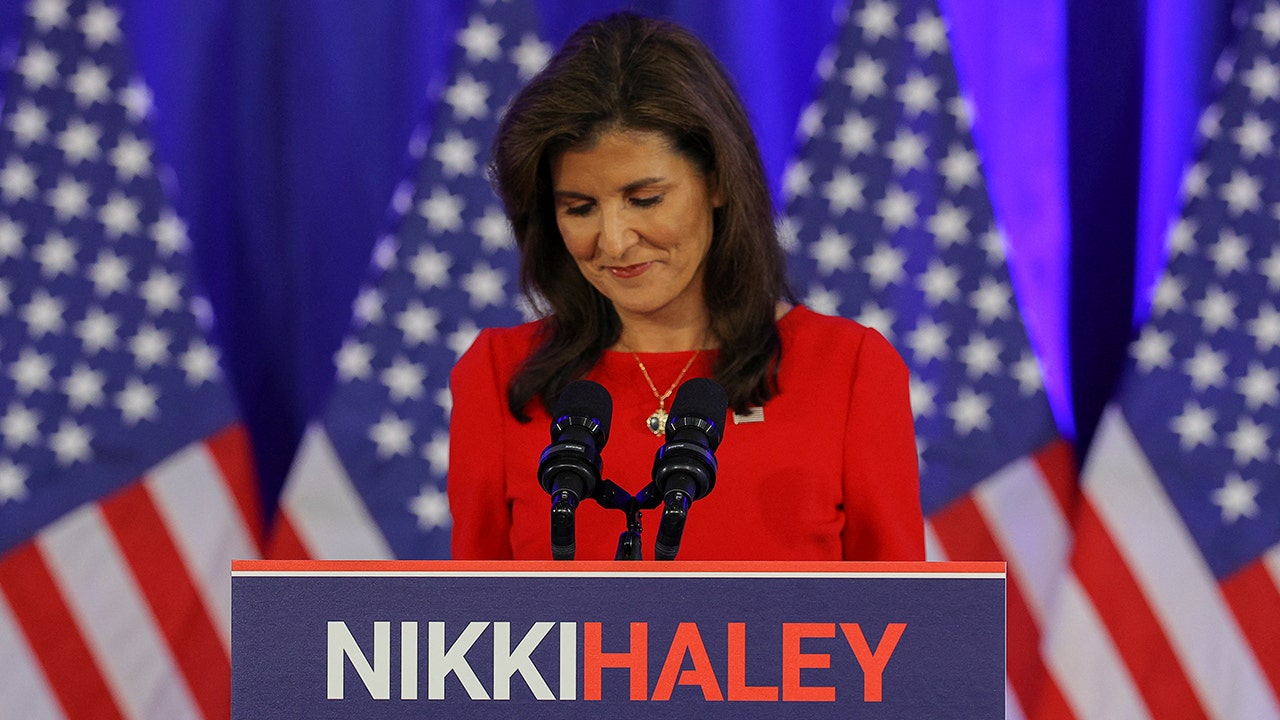Three weeks ago, retirees Joan and Gilbert Marin were traveling home to Riverside aboard a Boeing 737 Max 9 on Alaska Airlines. Suddenly, they heard a loud explosion and saw a huge hole in the side of the plane two rows in front of them.
“The wind, the noise, the roar,” said Joan Marín, 71. “Everything was rushing.”
Just ahead of the couple, a young man holding his cell phone was sucked out of the plane and the tremendous wind tore his shirt off his back, he said. Joan's husband looked at his dog, Toby, who was in a cage at his feet.
“His eyes were popping out of his head,” Gilbert, 74, said. He lunged to grab his 13-year-old dog, fearing the force of the burst would “suck him right under the seat and everything.”
This week, Federal Aviation Administration officials announced that Boeing 737 Max 9 planes would be allowed to fly again, following an inspection and maintenance process for the 171 planes grounded following the Jan. 5 flight. Most of those planes belong to Alaska Airlines and United Airlines.
Alaska's first Max 9 flight since the explosion took off Friday and landed in San Diego early in the afternoon.
“Let me be clear: This will not be business as usual for Boeing,” FAA Administrator Mike Whitaker said in a statement Wednesday.
“The quality assurance issues we have seen are unacceptable,” he added. “That's why we will have more troops on the ground closely examining and monitoring production and manufacturing activities.”
As airlines prepare to return planes to service, the National Transportation Safety Board's investigation into the midair cockpit panel explosion is ongoing.
“Our long-term focus is on improving our quality so we can regain the trust of our customers, our regulator and the flying public,” Stan Deal, president and CEO of Boeing Commercial Airplanes, wrote in a message to employees Friday. at night. “Frankly, we have let them down and let them down.”
Alaska Airlines Flight 1282 passengers Gilbert Marin, 74, and Joan Marin, 71, pictured with their dog.
(Courtesy of Joan and Gilbert Marin)
Boeing has promised to cooperate with the investigation. After the incident, CEO David Calhoun acknowledged that “a quality leak” had occurred and told employees, “This event can never happen again.”
“This explosion – we have seen this pattern before. Something big happens and Boeing makes all these promises,” said Ed Pierson, former senior manager of the company's 737 factory. “Then what happens is it fades into memory, and then Boeing requests special exemptions and special treatment from the FAA. And the cycle continues.”
Safety problems on Boeing Max planes go far beyond this incident, said Pierson, executive director of the Aviation Safety Foundation, a watchdog group that has tried to draw public attention to issues related to the aircraft. Boeing 737 Max 8 accidents in 2018 and 2019 that killed 346 people. In September, the group released a study that found airlines filed more than 1,300 reports of serious safety problems. on Max 8 and Max 9 aircraft to the FAA.
“These same problems that existed in 2018 and 2019 [at Boeing] that were the precursors to the accidents are still there,” Pierson said. “This is a culture where money is everything. They measure success by the number of aircraft delivered, rather than the number of quality aircraft delivered. … When you take all of this together, it’s just a disaster waiting to happen.”
Boeing did not comment on Pierson's comments.
Alaska Airlines announced Friday that it had completed inspections on a first group of Max 9s returning to service, beginning with flight 1146 from Seattle to San Diego on Friday afternoon. The flight left more than an hour late, according to FlightAware.
“Each of our 737-9 MAX [planes] “It will return to service only after rigorous inspections are completed and each aircraft is deemed airworthy in accordance with FAA requirements,” Alaska said in a statement.
On Wednesday, United Airlines told employees that the company planned to return its Max 9s to the skies on Sunday. Both Alaska and Alaska had reported finding loose bolts on the Max 9 planes during internal inspections in the weeks after the Jan. 5 flight.
“In the coming days, our teams will continue to act comprehensively and prioritize safety and compliance,” United Chief Operating Officer Toby Enqvist wrote in a message to employees.
Deal, the Boeing executive, said the company had taken “immediate steps to strengthen quality assurance and controls at our factories.”
“We deeply regret the significant disruption and frustration to our customers, some of whom have been publicly and unfairly criticized,” he wrote to employees.
Meanwhile, the Marines said they are still reliving the incident and want answers.
“What we want to see is the airline and Boeing step up and accept responsibility and say, 'This is what went wrong, this is how we'll make sure it never happens again,'” said Nick Rowley, a lawyer. which represents the airline. Riverside couple, who noted that they had not taken any legal action so far.
Next week, Joan Marín plans to fly to Alaska again, this time from Los Angeles to Hawaii.
“I looked at what type of plane it was to make sure it wasn't a Max 9,” he said.












